Performances Analysis of a Novel Electromagnetic-Frictional Integrated Brake Based on Multi-Physical Fields Coupling
Abstract
:1. Introduction
2. Structure and Working Modes
3. Mathematical Models of Multi-Field Coupling
3.1. Multi-Field Coupling Mechanism of the Integrated Brake
3.2. Multi-Field Coupling Mathematical Models of the Integrated Brake
3.3. Multi-Field Coupling Boundary Conditions for the Integrated Brake
4. Establishing the Finite Element Model
4.1. Three-Dimensional Modeling of the Integrated Brake
4.2. Material Properties of Integrated Brake
4.3. Adding the Required Physical Fields
4.4. Computational Domain and Mesh Generation
5. Numerical Simulation and Analysis
5.1. Temperature Field Analysis for the Integrated Brake
5.1.1. Emergency Braking Condition
5.1.2. Downhill Braking at a Constant Speed
5.2. Comparative Analysis of the Integrated Brake and Traditional Friction Brake
5.2.1. Emergency Braking Condition
5.2.2. Downhill Braking at a Constant Speed
6. Conclusions
Author Contributions
Funding
Conflicts of Interest
References
- Jazar, R.N. Vehicle Dynamics: Theory and Application, 3rd ed.; Springer: New York, NY, USA, 2017. [Google Scholar]
- Karakoc, K.; Suleman, A.; Park, E.J. Analytical Modeling of Eddy Current Brakes with the Application of Time Varying Magnetic Fields. Appl. Math. Model. 2016, 40, 1168–1179. [Google Scholar] [CrossRef]
- Gay, S.E. Contactless Magnetic Brake for Automotive Applications. Ph.D. Thesis, Texas A&M University, College Station, TX, USA, 2005. [Google Scholar]
- Song, J. Performance Evaluation of a Hybrid Electric Brake System with a Sliding Mode Controller. Mechatronics 2005, 15, 339–358. [Google Scholar] [CrossRef]
- Gay, S.E.; Ehsani, M. Parametric Analysis of Eddy-Current Brake Performance by 3-D Finite-Element Analysis. IEEE Tran. Magn. 2006, 42, 319–328. [Google Scholar] [CrossRef]
- Anwar, S.; Zheng, B. An Antilock-Braking Algorithm for an Eddy-Current-Based Brake-By-Wire System. IEEE Tran. Veh. Tech. 2007, 56, 1100–1107. [Google Scholar] [CrossRef]
- Liu, C.; He, R. Structure Analysis of Composition of Frictional Brake and Contactless Wheel Retarder System. Trans. Chinese Soc. Agrc. Mach. 2010, 6, 25–30. (In Chinese) [Google Scholar]
- Wang, K.Y.; Tang, J.H.; Li, G.Q.; Yuan, C.Y. Optimal Design of Vehicle Disc Brake Integrated Electromagnetism and Friction. Mach. Design Manuf. 2013, 3, 132–135. (In Chinese) [Google Scholar]
- Tang, J.H.; Wang, K.Y.; Bei, S.Y. Numerical Simulation of Electromechanical Composite Brake Based on Multi Field Coupling. J. Balkan Trib. Assoc. 2016, 3, 2265–2280. [Google Scholar]
- Tang, J.H.; Wang, K.Y.; Zhang, L.C.; Li, G.Q. Temperature Analysis on Electromechanical Composite Brake of Automobile Based on Numerical Simulation. Acta Technica 2016, 61, 219–230. [Google Scholar]
- Yin, Y.; Bao, J.; Liu, J.; Guo, C.; Liu, T.; Ji, Y. Braking Performance of a Novel Frictional-Magnetic Compound Disc Brake for Automobiles. Proc. Inst. Mech. Eng. Part D J Auto. Eng. 2018, 1–12. [Google Scholar] [CrossRef]
- Zhao, K.; Wei, L. 3D Thermo-mechanical Coupling Temperature Field Simulation of Drum Brake. Trans. Chinese Soc. Agric. Mach. 2009, 40, 32–36. (In Chinese) [Google Scholar]
- Wang, Y.; Cao, X.; Yao, A. Study on the Temperature Field of Disc Drake Friction Flake. J. Wuhan Univ. Tech. 2001, 7, 22–24. (In Chinese) [Google Scholar]
- Shi, J. Design of double disc friction and electromagnetic integrated brake of car and research of its temperature field. Master’s Thesis, Jiangsu University, Zhenjiang, China, 2014. [Google Scholar]
- Su, S.; Kong, W.; Chen, D. (Eds.) Simulation and Design of Thermal Energy Engineering and Advanced Energy Technology; Chemical Industry Press: Beijing, China, 2015. [Google Scholar]
- Yu, W. The simulation and analysis of the transient temperature field of automotive disk brake. Master’s Thesis, Hefei University of Technology, Hefei, China, 2009. [Google Scholar]
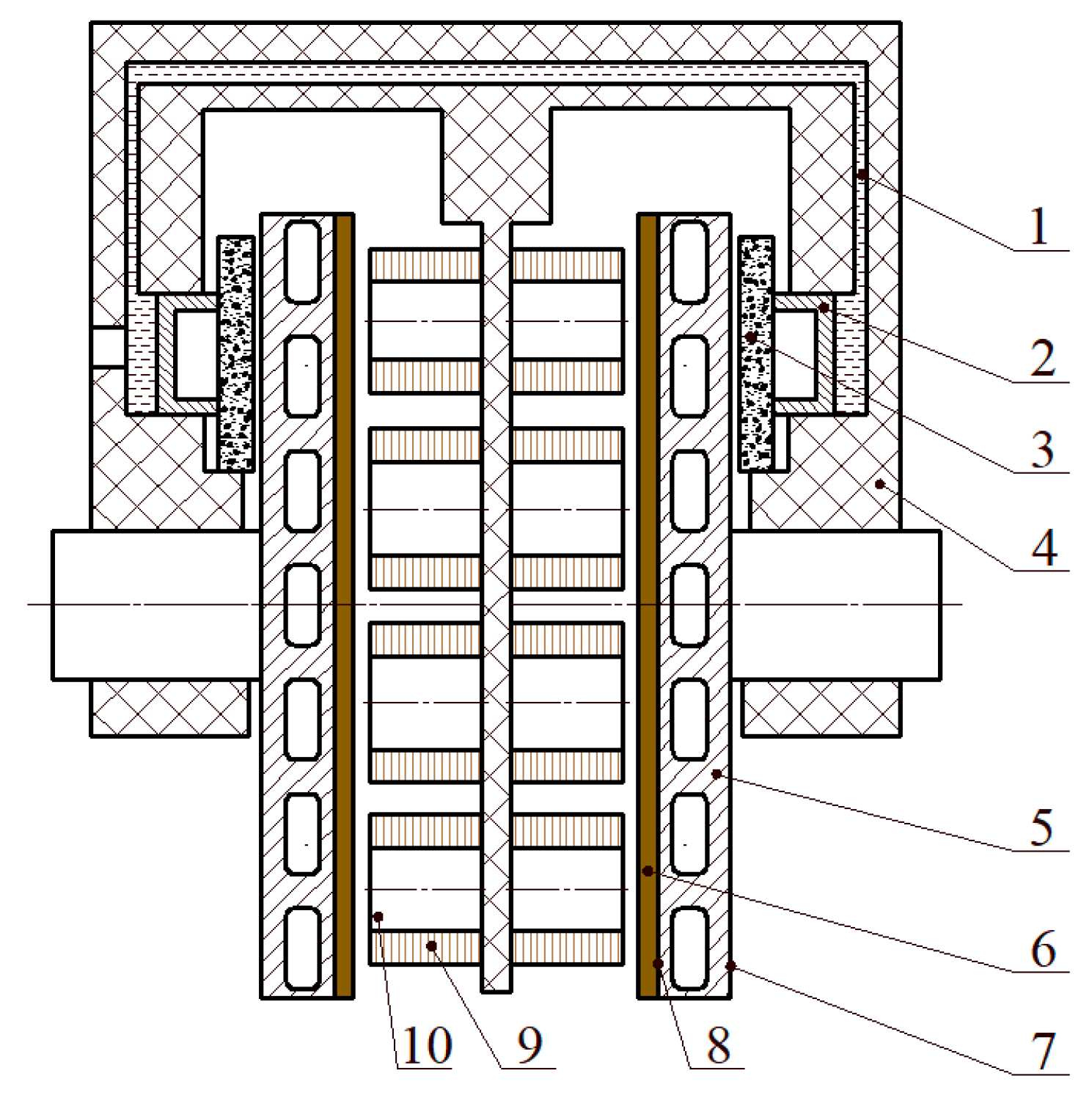

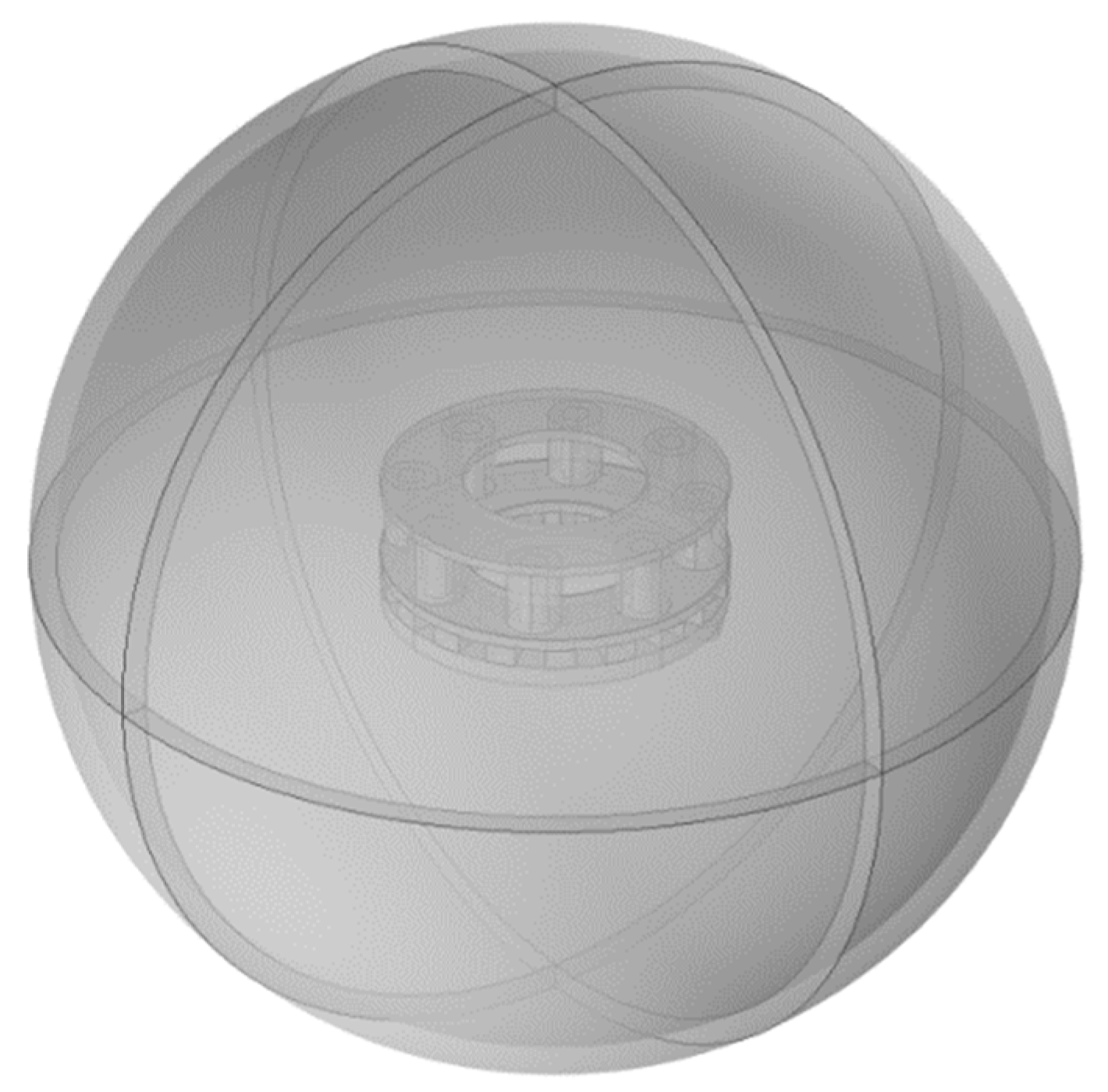
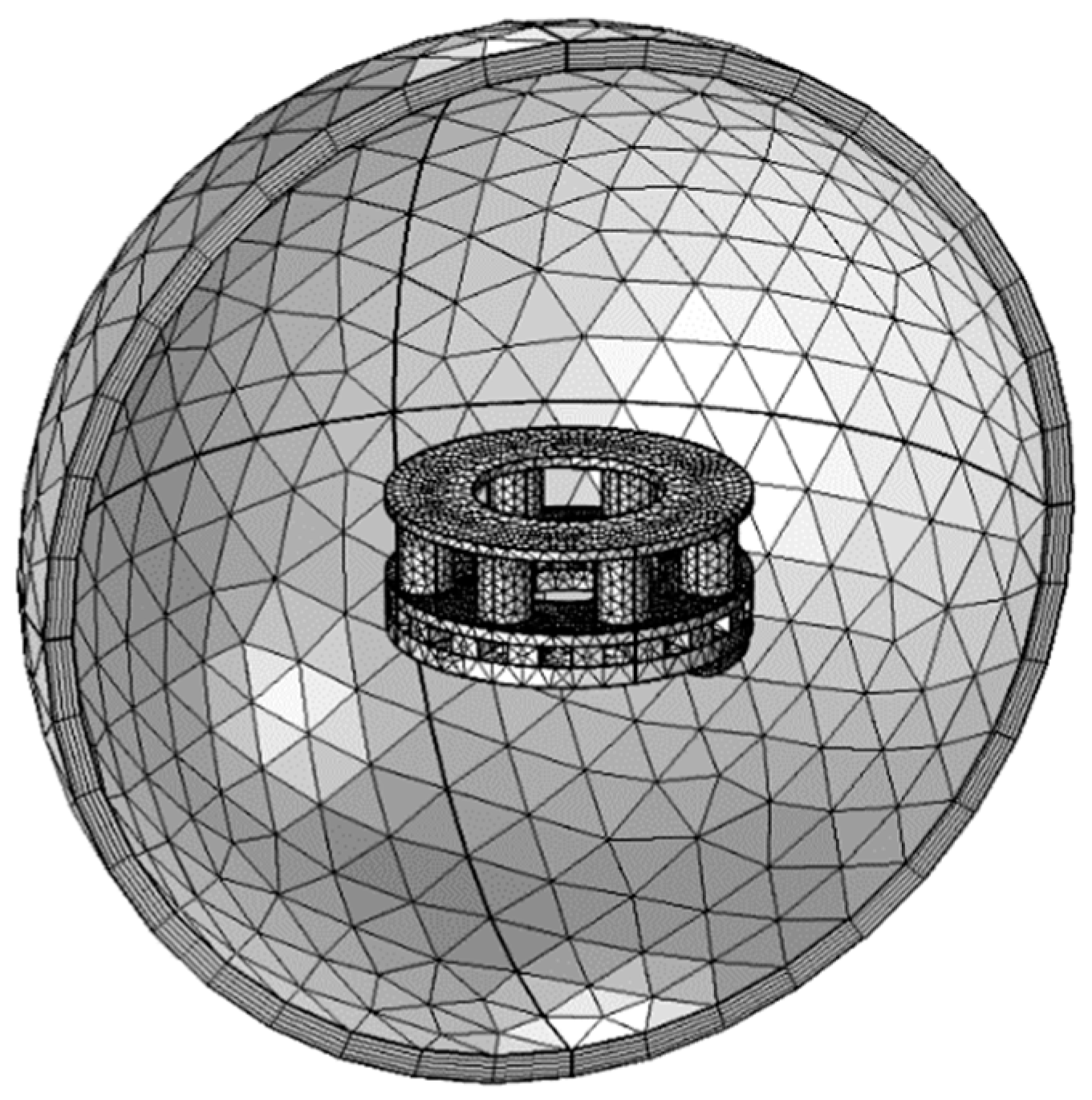
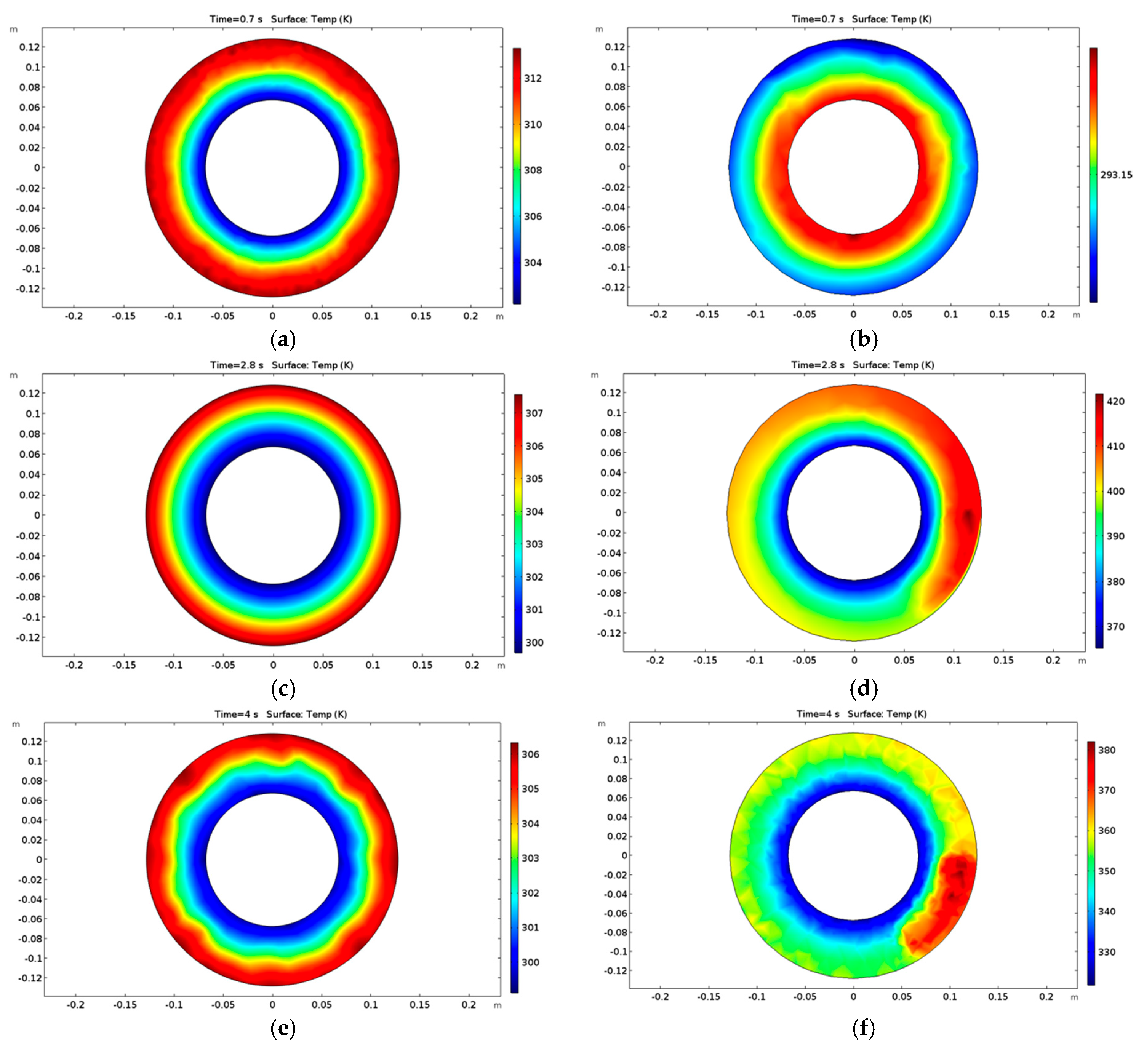
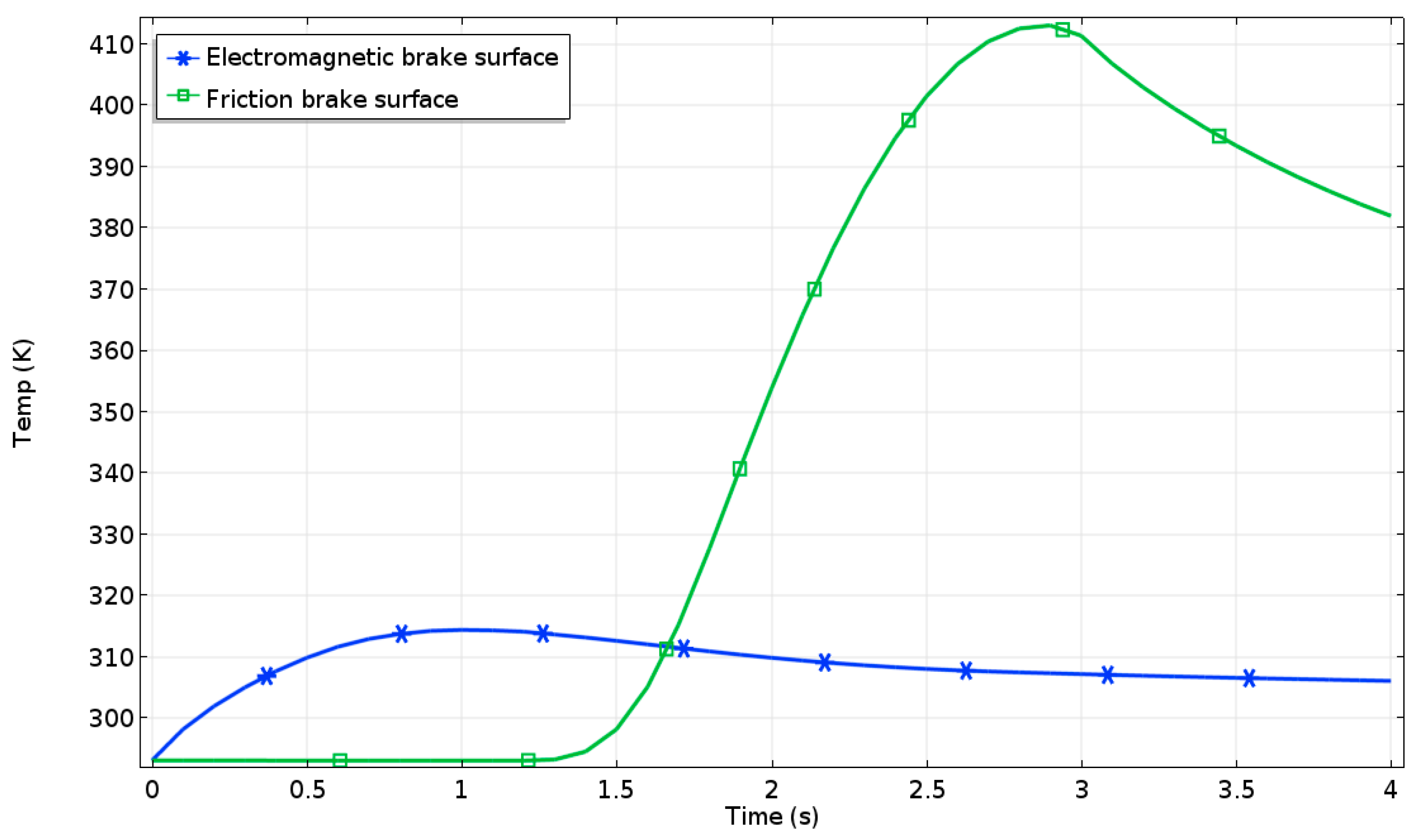
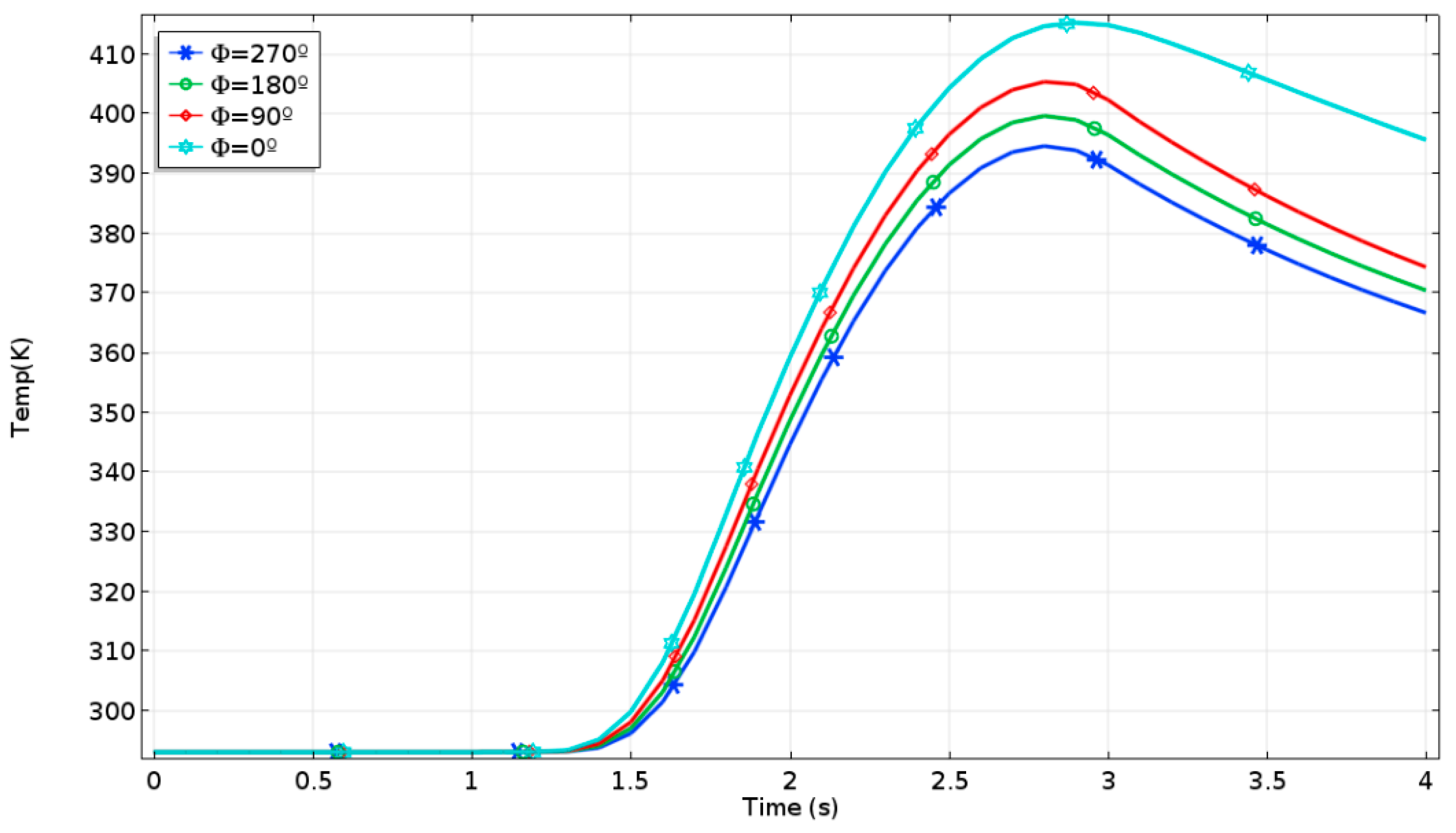
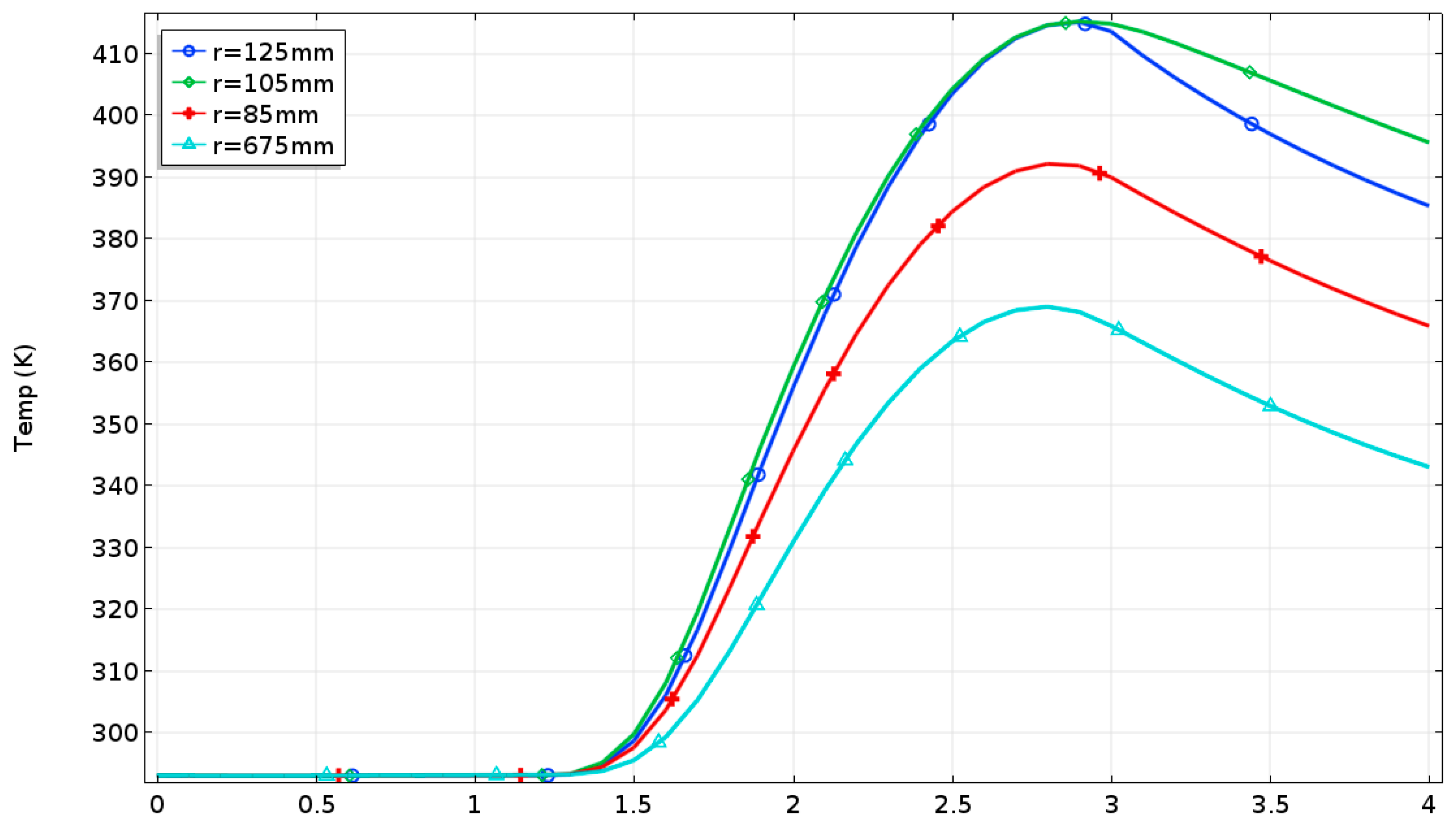
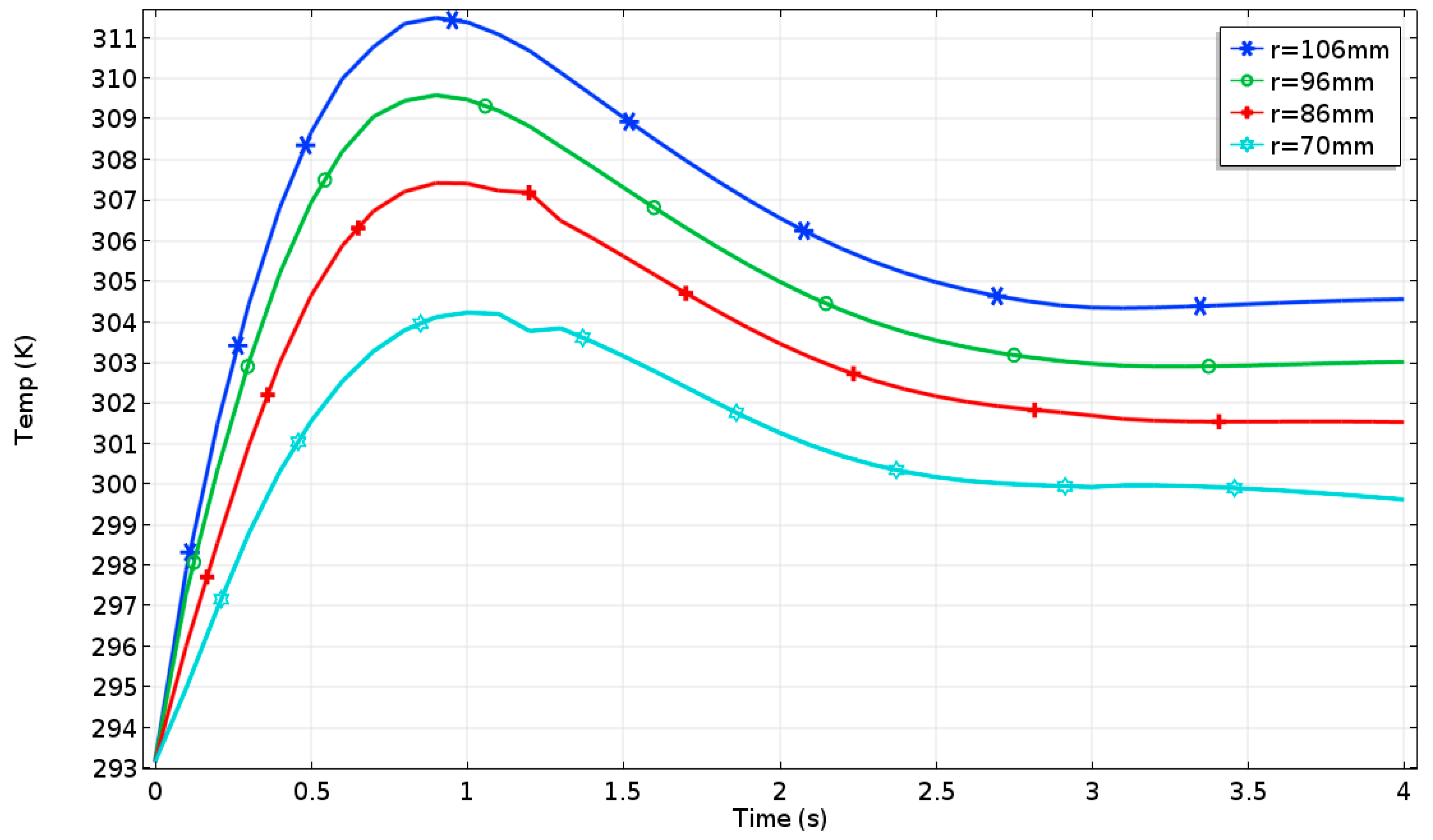
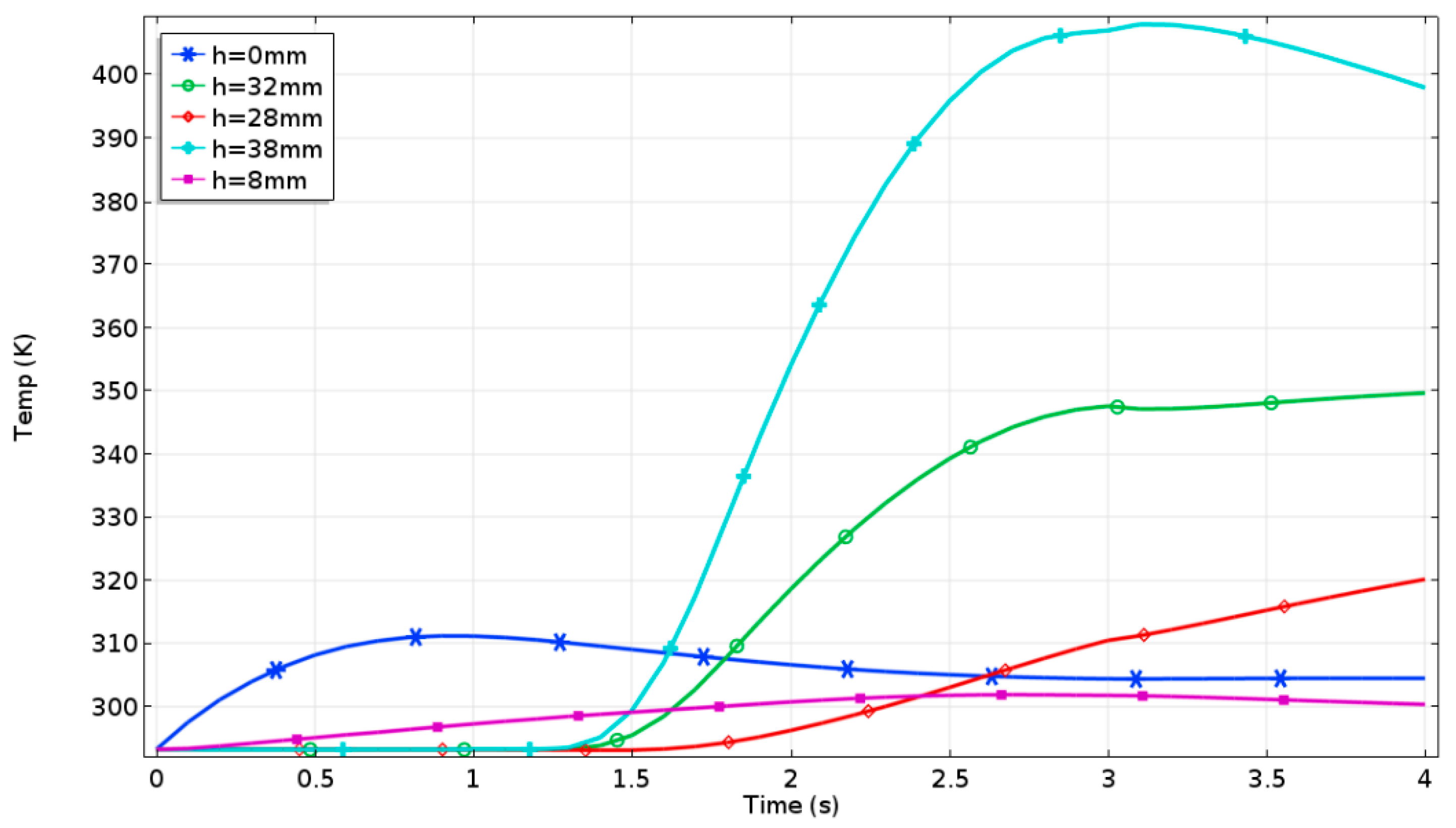
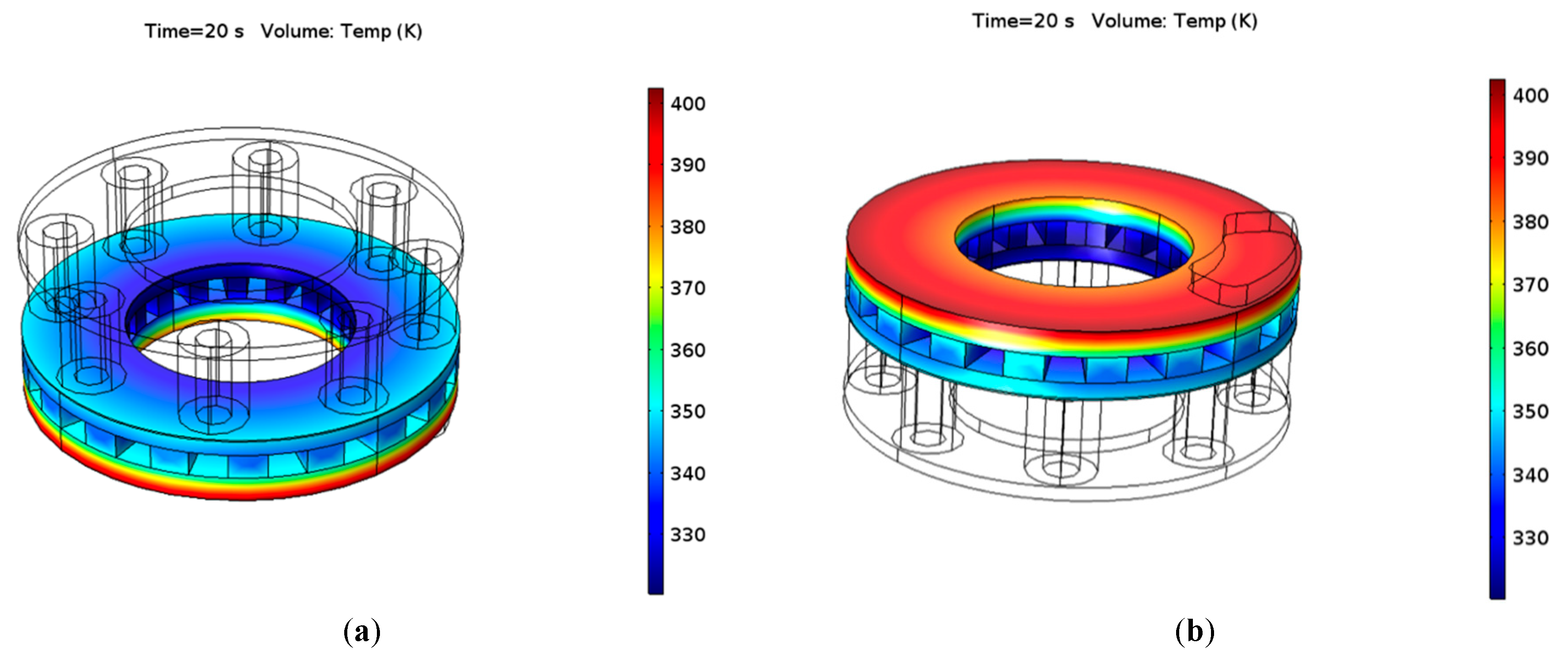
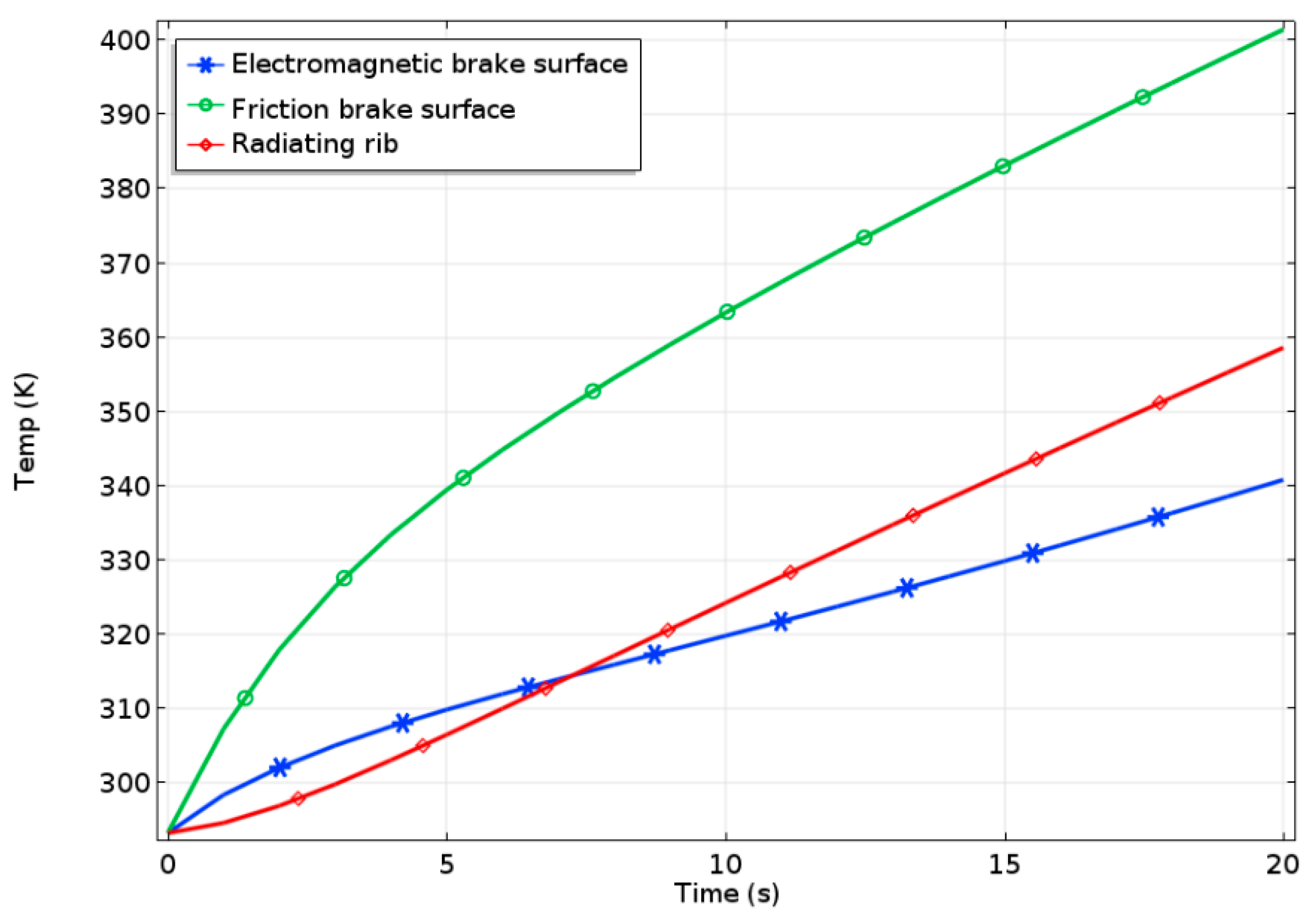

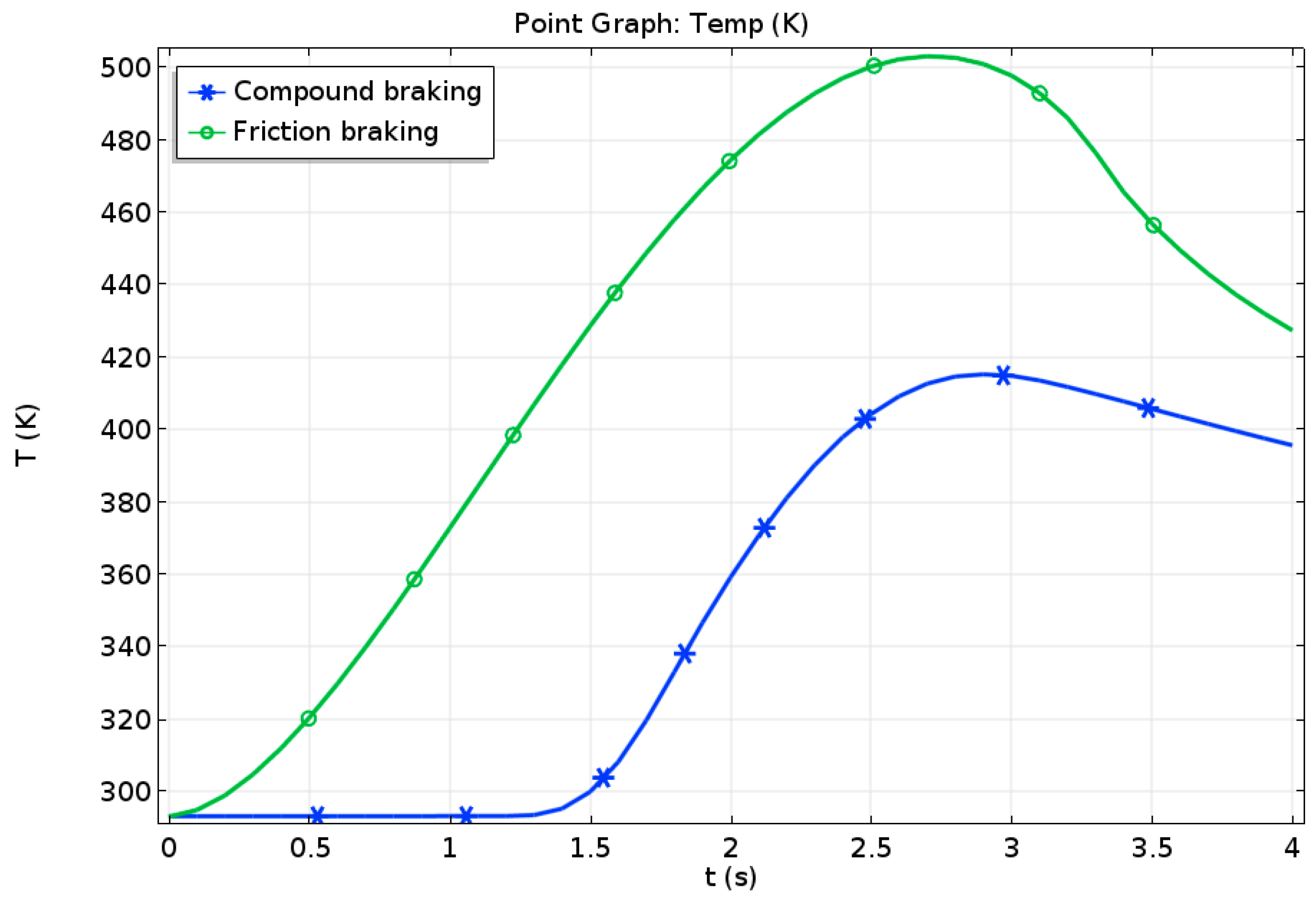
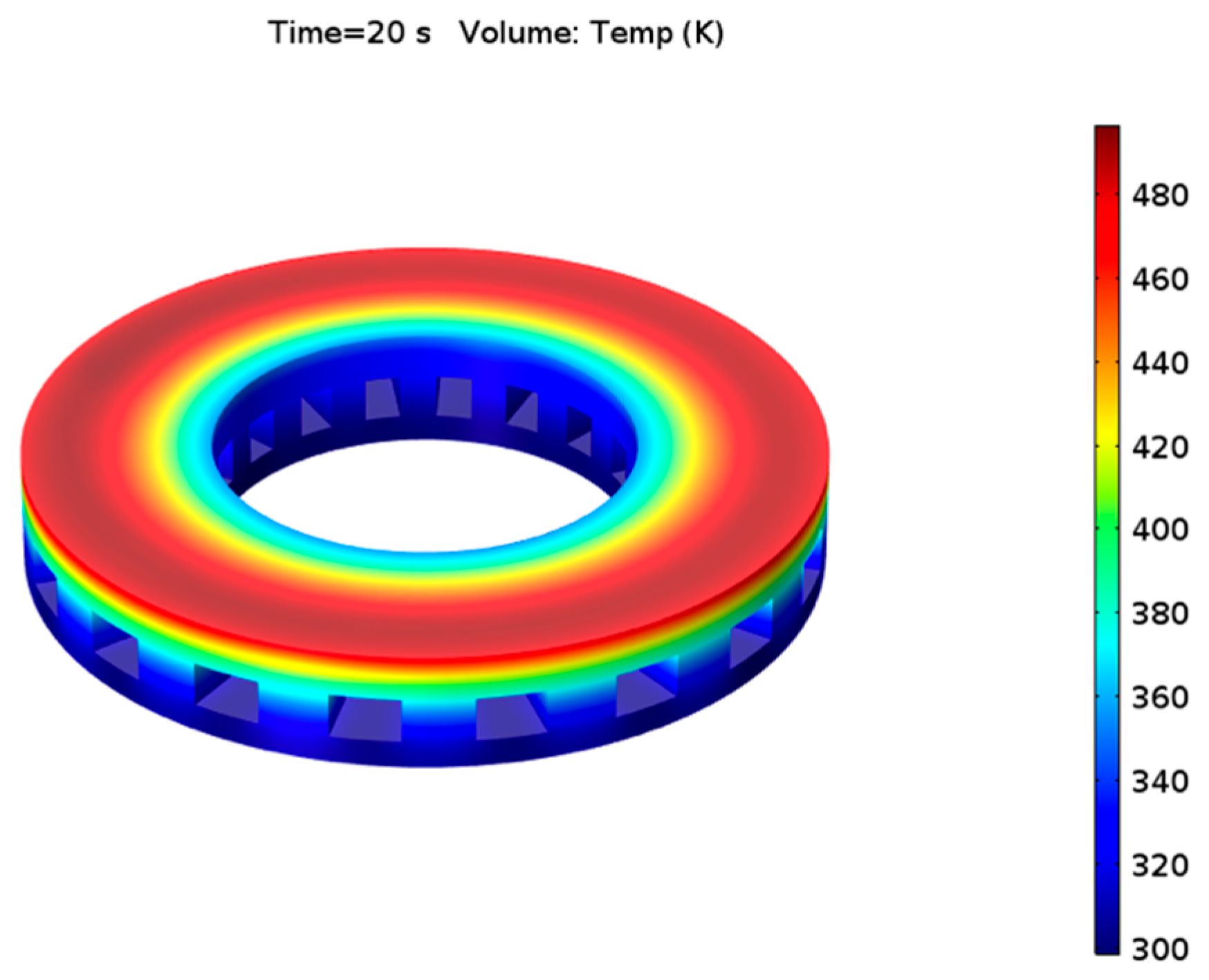
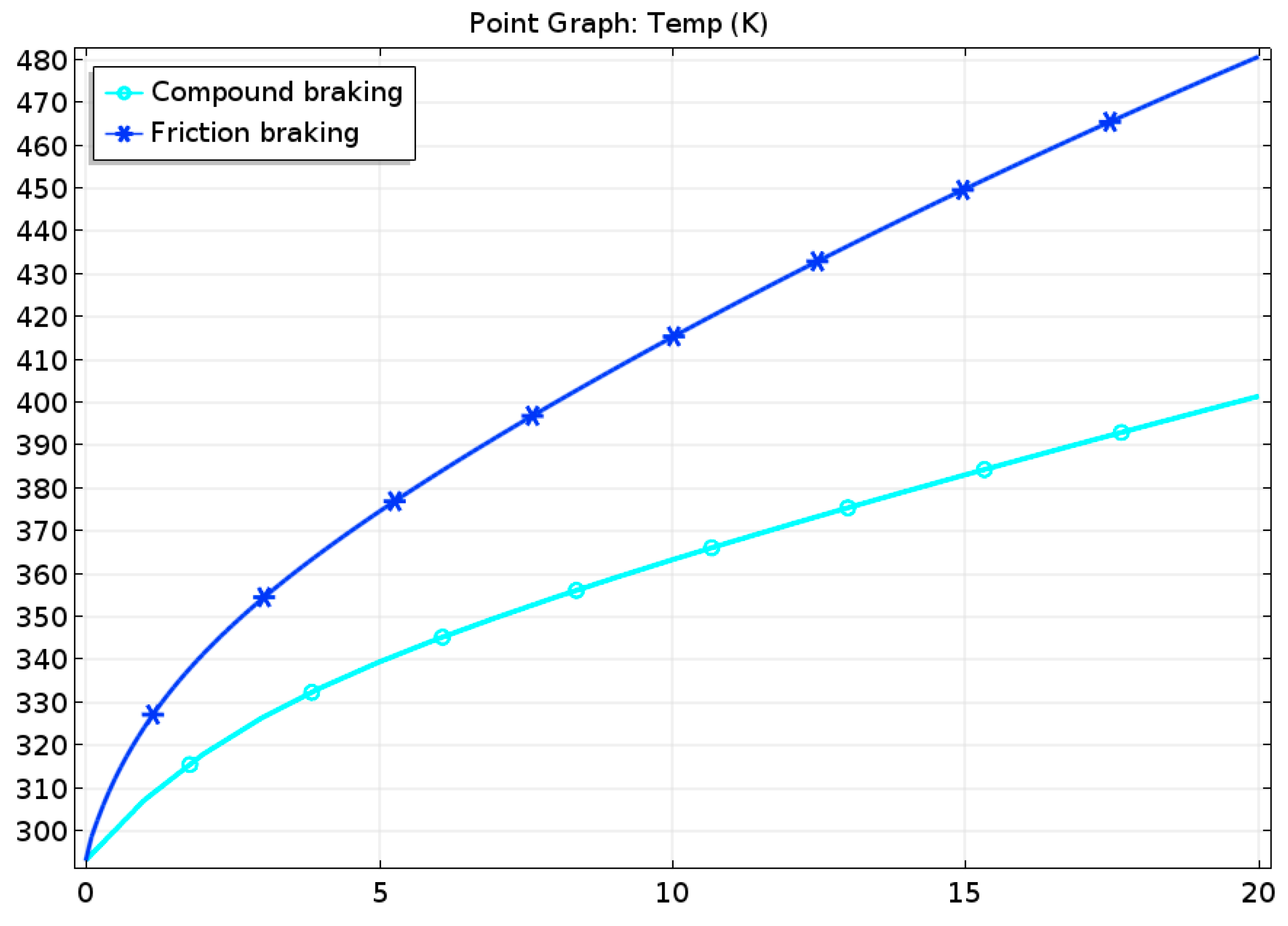
| Name | Value |
|---|---|
| Total mass (m) | 2095 kg |
| Wheelbase (L) | 2670 mm |
| Front axle load (Ff) | 1119 kg |
| Rear axle load (Fr) | 976 kg |
| Wheel radius (Rb) | 318 mm |
| Materials | Relative Permeability μr | Conductivity γ (s/m) | Relative Dielectric Constant |
|---|---|---|---|
| Air | 1 | 10 | 1 |
| Brake disc | 200 | 106 | 1 |
| Copper layer | 1 | 5.998 × 107 | 1 |
| Iron core | 4000 | 1.03 × 107 | 1 |
© 2019 by the authors. Licensee MDPI, Basel, Switzerland. This article is an open access article distributed under the terms and conditions of the Creative Commons Attribution (CC BY) license (http://creativecommons.org/licenses/by/4.0/).
Share and Cite
Wang, K.; He, R.; Tang, J.; Liu, R. Performances Analysis of a Novel Electromagnetic-Frictional Integrated Brake Based on Multi-Physical Fields Coupling. World Electr. Veh. J. 2019, 10, 9. https://doi.org/10.3390/wevj10010009
Wang K, He R, Tang J, Liu R. Performances Analysis of a Novel Electromagnetic-Frictional Integrated Brake Based on Multi-Physical Fields Coupling. World Electric Vehicle Journal. 2019; 10(1):9. https://doi.org/10.3390/wevj10010009
Chicago/Turabian StyleWang, Kuiyang, Ren He, Jinhua Tang, and Ruochen Liu. 2019. "Performances Analysis of a Novel Electromagnetic-Frictional Integrated Brake Based on Multi-Physical Fields Coupling" World Electric Vehicle Journal 10, no. 1: 9. https://doi.org/10.3390/wevj10010009
APA StyleWang, K., He, R., Tang, J., & Liu, R. (2019). Performances Analysis of a Novel Electromagnetic-Frictional Integrated Brake Based on Multi-Physical Fields Coupling. World Electric Vehicle Journal, 10(1), 9. https://doi.org/10.3390/wevj10010009




